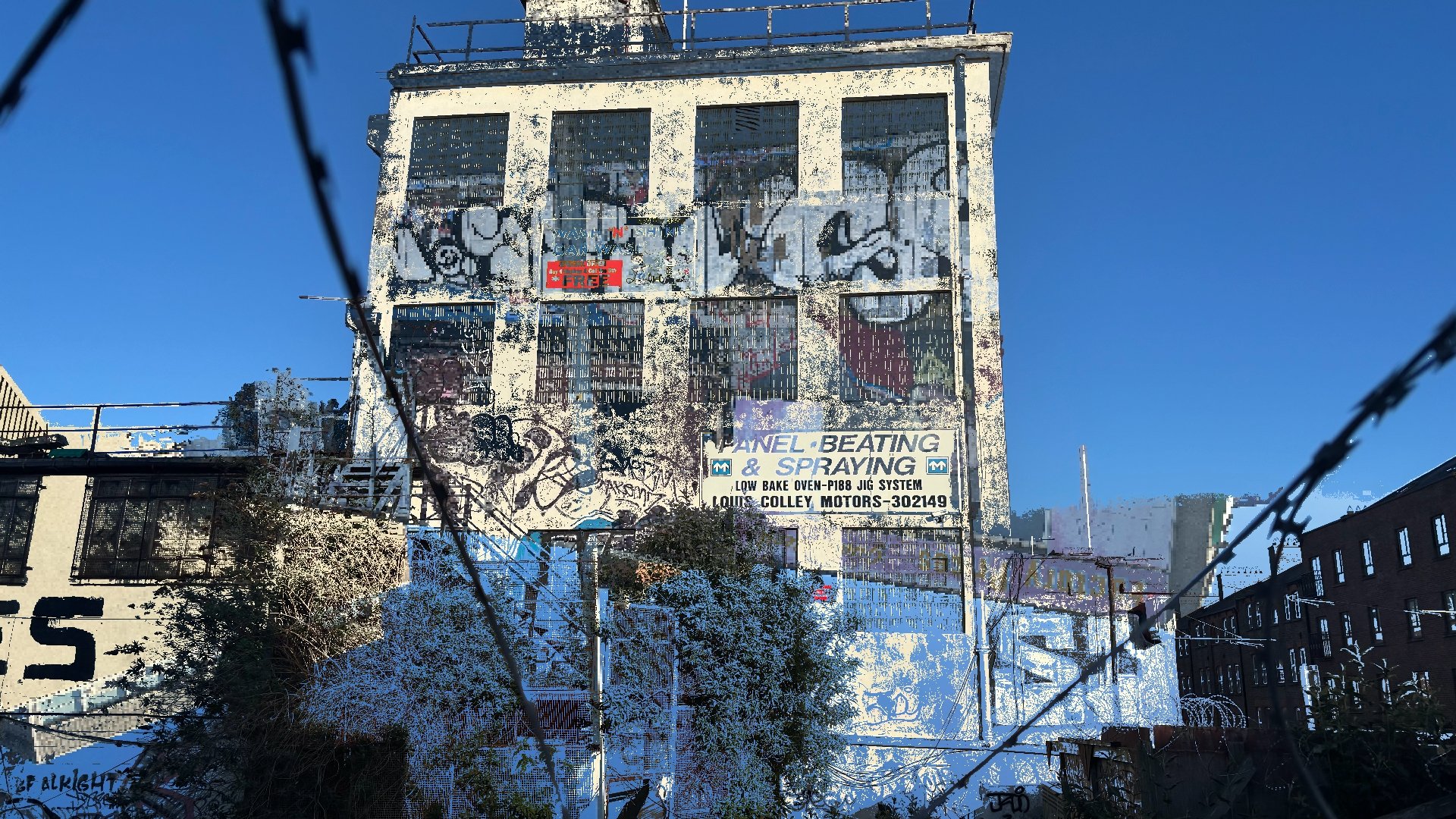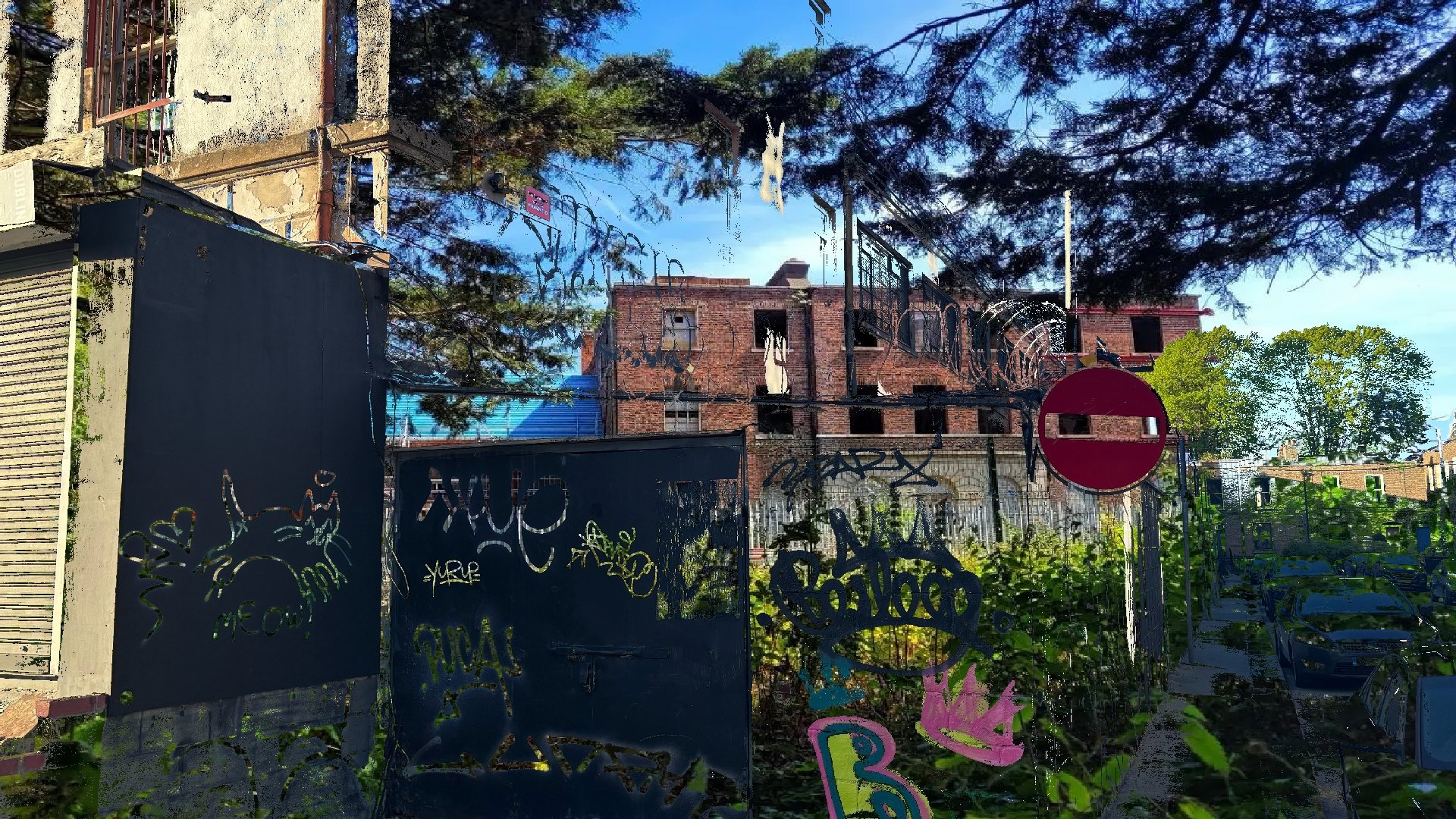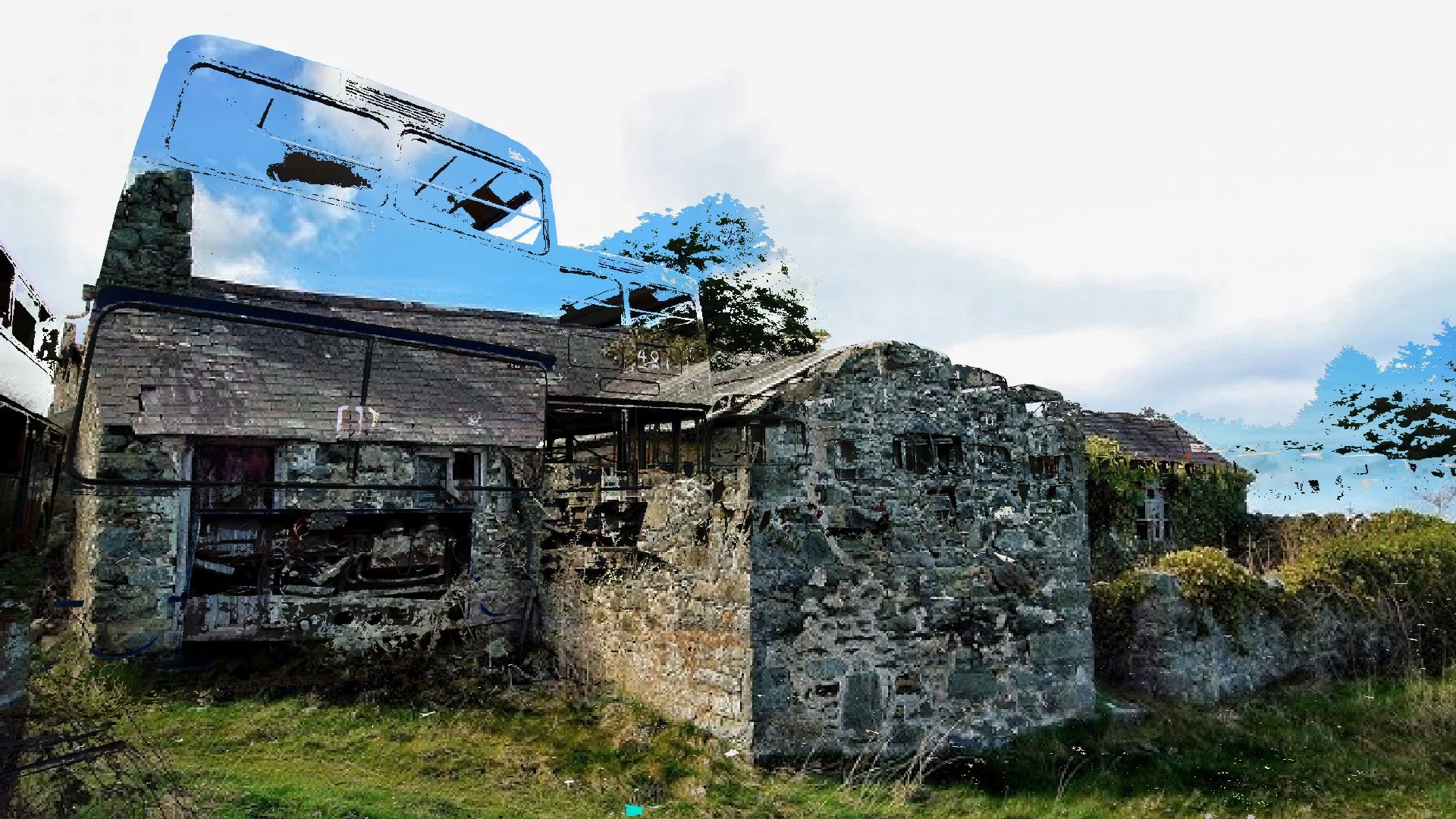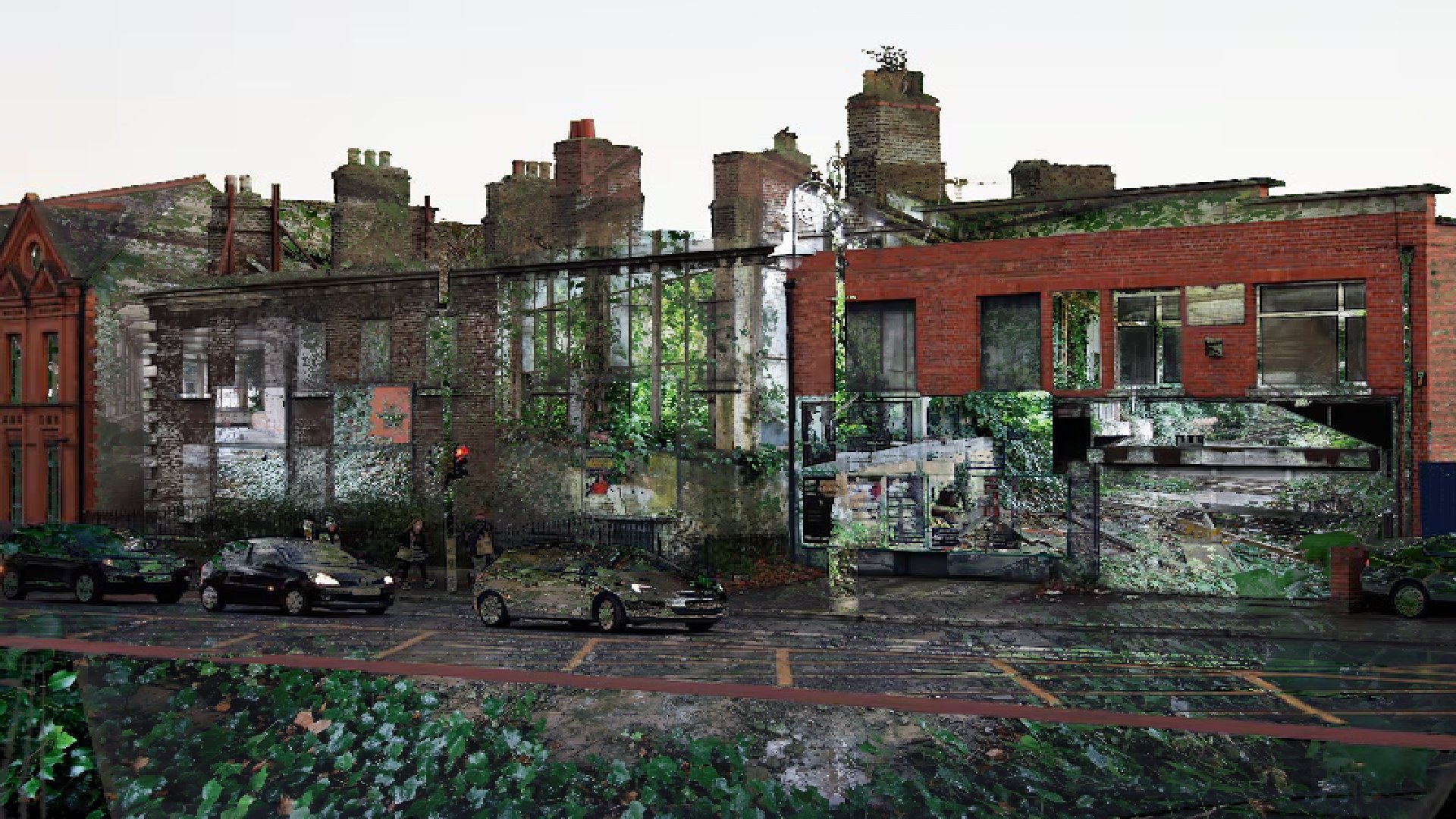Title: Reclamation: Entropy and Emergence
Individual Project: Collaborative Intermedia Studio: Advanced Digital Arts Production
MPhil in Digital Arts and Intermedia Practices, Trinity College Dublin, 2025
Introduction: Witnessing Urban Reclamation
In the liminal spaces of urban abandonment, where human activity has receded and the city's pulse slows, a subtle yet profound narrative of reclamation emerges. Reclamation: Entropy and Emergence is an audio-video collage that both documents and meditates on the fleeting nature of our built environment. Rather than simply chronicling decay, the work reveals how these processes are the visible reassertion of natural forces, long at work beneath the surface of human ambition.






Visual Language: Glitch, Superimposition, and Porous Boundaries
The visual strategy of the piece intentionally disrupts traditional documentary forms. Through digital superimposition, two video streams, one of architectural dereliction and the other of natural reclamation, are layered using a subtractive value technique. This allows the second image to bleed through the first, generating a spectral, glitch-inflected effect. Such visual "glitches" are not just aesthetic choices; they serve as metaphors for the porousness between human and non-human domains, echoing the unpredictability and complexity of entropic systems. Drawing from Glitch art traditions, these disruptions become opportunities for new forms of seeing, foregrounding the instability and contingency of both digital and physical structures.
Urban Fabric: Mapping the Invisible City
The footage is anchored in the specificity of Dublin, documenting sites that are omnipresent yet largely invisible in daily urban life. These locations, ranging from neglected Georgian houses to abandoned industrial sites, form a fragmented constellation across the city's fabric. Many are in flux: some have already been demolished, others await uncertain futures, and some are caught in bureaucratic inertia or planning disputes. Their invisibility is not merely physical neglect, but a symptom of social, economic, and political processes that render them peripheral to dominant narratives of urban progress. These "in-between" spaces become repositories of memory, potential, and transformation, where the city's histories and failures accumulate and linger.






Soundscape: Sonic Entropy and Material Resonance
The audio component utilises electromagnetic induction recordings captured at derelict sites and during our group exhibition, "Against Transcience," developed by M.Phil. students in Digital Arts and Intermedia Practices, creating a dark ambient soundscape that mirrors the visual transformations. These frequencies do more than accompany the images; they actively modulate the video's subtractive layers, creating a dynamic interplay between sound and image. The result is a sensory field in which material and immaterial forces, visual glitches and sonic disruptions reflect the instability of entropic processes.
Thematic Exploration: Temporality, Entropy, and Regeneration
The work interrogates the relationship between temporality and permanence. Often framed as "progress," human development is revealed as transient when viewed through the lens of entropy and deep time. Decay, rather than an endpoint, is recast as a vital phase within ongoing cycles of creation, destruction, and regeneration. The piece challenges anthropocentric perspectives, suggesting that what we call decay is, in fact, a form of ecological vitality—one that operates on timescales and through processes that exceed human control.
Conclusion: Toward Ecological Consciousness
Reclamation: Invites viewers to reconsider their place within larger transformation systems. By bearing witness to the transience of human constructions, the work encourages a more humble and ecologically attuned relationship to the built environment. It suggests that true ecological consciousness lies in acknowledging the impermanence of our interventions and finding beauty in the continuous, unpredictable processes that shape our world.